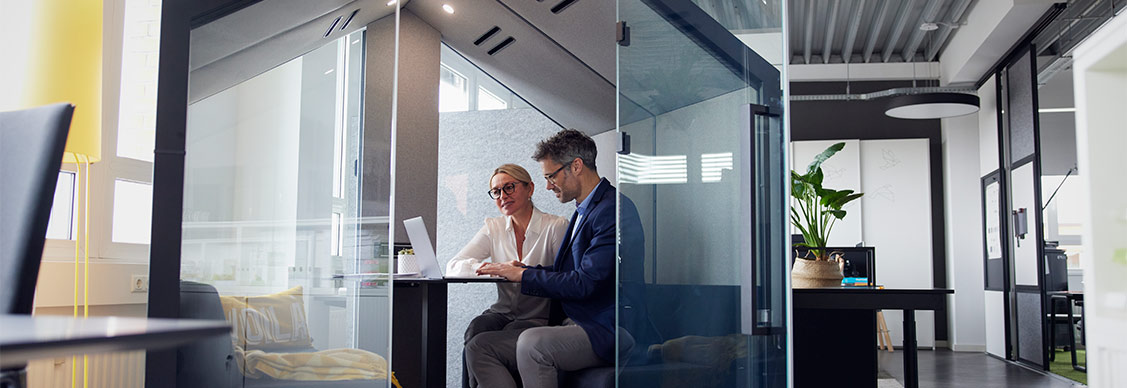How companies are addressing rising office fit-out costs
Getting people back in the office requires investment in technology and adaptable spaces
Many employees continue to resist employers’ calls back to the office. From noise and a lack of privacy, lots of offices still lack the comforts of home.
Companies are addressing the issues with better workspaces. But there’s more often than not a major hurdle: costs are rising for construction, sustainable materials and fittings like sound-proof phone booths or electrical equipment.
Around the world, labor shortages and wage increases are compounding the issue. In EMEA alone, labor costs have risen over 12% in the last 12 months and the average fit-out cost is up 5.2% year on year, according to JLL’s latest Fit-Out Cost Guide.
In Asia Pacific, material price increases have stabilized, but high energy costs and supply chain disruption remain factors, while in the Americas, evolving office design strategies and occupier requests are increasing tenant-influenced costs.
“Supporting both hybrid and face-to-face work comes at a price,” says Andrew Hudson, Senior Director for Project Execution with JLL PDS. “It requires adaptability, collaborative and private space, multi-functional rooms and integrated technology solutions – all of which take capital expenditure.”
Technology is taking the lion’s share of budget
Despite more employees being in the office, the complexity of hybrid working means they’re still likely to be involved in calls with colleagues working elsewhere. It’s why technology that supports seamless collaboration and immersive meeting experiences is high on fit-out wish lists.
“A much larger proportion of fit-out budget is being spent on better technology solutions, bigger high-definition screens, better audio and cameras that track, all to better reflect in person meetings” says Hudson.
JLL’s Global Technology Survey found more than three quarters of corporate real estate leaders are investing in better office technology, while the 2024 Global Occupancy Benchmarking report shows 39% have specifically enhanced their conference room tech.
Yet tech alone won’t improve productivity. “It's extremely important to train your people on how to get the best out of it,” says Romeu Carpinteiro, Head of Commercial Ops at JLL design and fit-out company,Tétris.
It’s an issue that many of us are familiar with. Cisco found seven out of 10 employees reporting proficiency issues with videoconferencing platforms and cloud-based document sharing, while two thirds of employees said current meeting rooms were ineffective.
Occupancy sensors, plus those that support wellness and sustainability goals by monitoring light and air quality or energy use, are also now commonplace.
With 86% of CRE leaders focused on cost reduction, Carpinteiro says this tech investment can rapidly pay for itself. “It helps reduce overall operating costs and provides hard metrics on post fit-out ROI.”
Adaptability drives value
Many firms are struggling to balance the need for collaboration space with individual work. JLL found just over half of time spent in the office was dedicated to individual tasks.
Hudson says there’s now much more consideration of purpose-driven fit-out and how space will be used – rather than just how it looks. “Different types of lighting, furnishings, plants and acoustic finishes, for example, can all tangibly affect comfort levels and contribute positively to productivity and the experience.”
Adaptability is key to boosting return-on-investment, he says. “We’re increasing flexibility in both layout and furniture solutions, based on human experience led design.”
This human-centred vision was the guiding principle for Diaego’s office fit -out, which features three zones tailored to the liveliness and level of privacy required for different activities.
Carpinteiro says modular and mobile furniture, partitions and booths allow for changes in the workspace from one day to the next, or from morning to afternoon. They also help manage costs by squeezing the most out of what is, in some cases, a reduced office footprint. Upcycled and repurposed furniture is also frequently seen as a cost-effective, sustainable solution.
The shift away from quantity to multi-functional quality is raising different questions. “Rather than how many desks can we fit in, we’re looking at how many types of experience we can fit into the space,” he says.
Take TravelPerk, which incorporated an “Arrivals Lounge” at their office to encourage informal and collaborative working, while a large bistro area offers flexible community space that can be transformed to suit different purposes.
Hudson stresses that remaining flexible, listening to employees and making small tweaks over time is how to keep getting value from your fit-out dollars.
Carpinteiro agrees. “Continuing to track whether both the business and employees are getting what they need is vital. But by placing people at the centre of your strategy, you can only win.”
